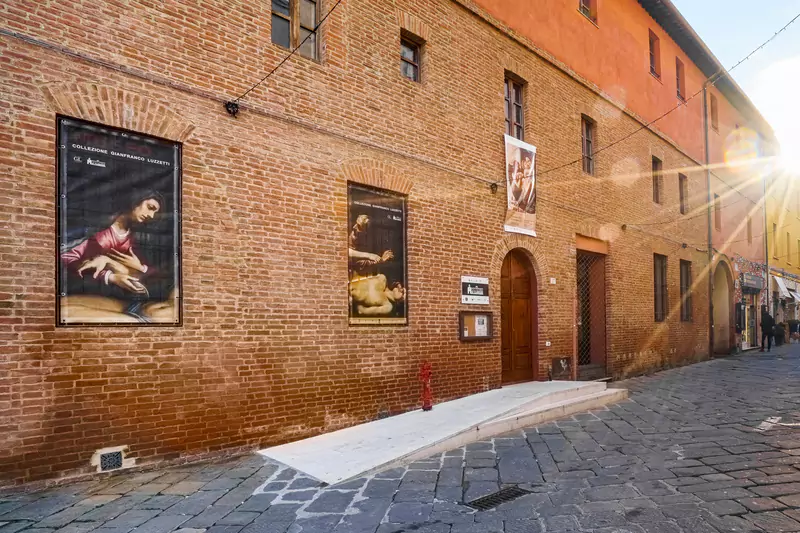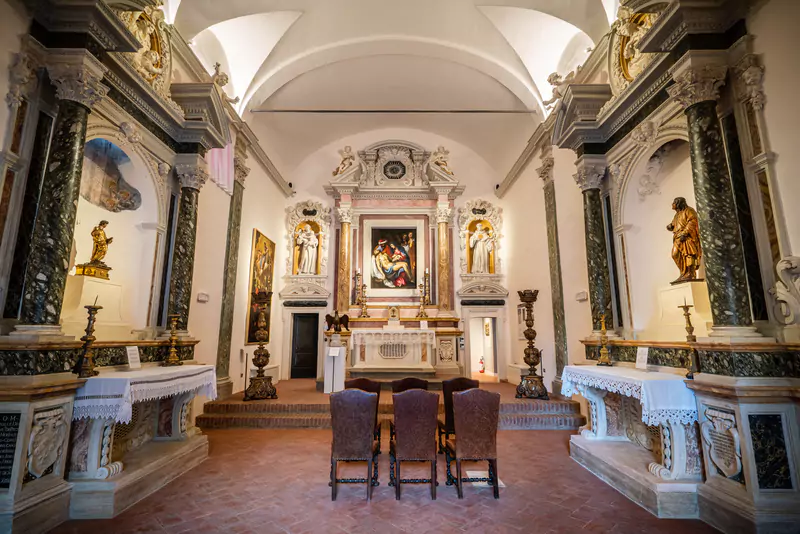The Clarisse Cultural Centre

Audioguide
Il Polo Culturale Le Clarisse — Le Clarisse Cultural Centre — is located
inside the former Convent of Santa Chiara in Grosseto, a building that dates back to the
end of the sixteenth century, and which was enlarged and refurbished during the
seventeenth century. Abandoned by the resident nuns at the end of the eighteenth
century, the edifice was used first as the home for employees of the nearby hospital,
before it eventually acquired a creative and artistic purpose, hosting the studios and
apartments of painters.
Since 1995, it has been a property owned and run by the city. After the year 2000, thorough
restoration works have been undertaken. Today, newly restored and united with the adjoining
Church of the Bigi (the former Church of Santa Chiara), the convent of Le Clarisse (the Poor
Clares) is a lively and dynamic civic cultural center, which looks towards the future while
telling its own story, housing four cultural institutions:
THE MUSEUM OF THE GIANFRANCO LUZZETTI COLLECTION
CLARISSE ARTE
THE MUSEO LAB – Laboratory Museum of the city of Grosseto
The faculty of Historical Sciences and the Grosseto University centre cultural
heritage
The ground floor holds THE MUSEUM OF THE GIANFRANCO LUZZETTI COLLECTION, inaugurated in 2019
following the donation to the City of Grosseto of a substantial collection of works that
Gianfranco Luzzetti, a Florentine antiquarian — but of Grossetan origin — had
brought together in the course of his life. The heart of the collection focuses on seventeenth-century
Florentine art. Its display inside a monastery of the same period, built during Florentine
dominion over Grosseto, enhances the identity of the collection, based on Baroque art from
the Tuscan capital, rediscovered and valorised only since the 1960s, thanks to the work of
important art historians like Mina Gregori, and antiquarians like Gianfranco Luzzetti. Among
the seventeenth century works, particular recognition can be given to four paintings by Pier
Dandini — to whom an entire room is dedicated — and to works by Santi di Tito,
Cigoli, Passignano, Giovanni Martinelli, Jacopo Vignali, Francesco Curradi, Giovanbattista
Vanni and Pietro Tacca.
The museum’s collection also features artworks by the Roman School, among them pieces
by Spadarino, by Passeri and Rusconi, as well as paintings from Northern Italy, such as a
large canvas by Montalto, and a small still-life by Panfilo Nuvolone. One also can admire
eighteenth-century masterpieces, by Corrado Giaquinto and Giovanni Domenico Lombardi called
the “Little Man”. The collection is completed by two nineteenth-century landscape
paintings, by Maffei and by Markò.
Located on the building’s first floor is CLARISSE ARTE, an exhibition space reserved
for temporary shows, and an information centre composed of the following: a library dedicated
to local art, an artists’ archive, a mediatheque, and a repository of artworks selected
from public art collections.
Among the works in the repository that are exhibited on a rotational basis, a first nucleus
focuses on the theme of “Researching the Territory: Origins”. A second nucleus
is entitled “Masters of Realism”, and includes works by Levi, Treccani, Grazzini,
Zancanaro, and other artists who have elaborated a specifically local tradition, with realist
inclinations, among whom are Gentili, Dominici, and Faccendi.
Then, following a chronological sequence, there are displayed works belonging to private
donors: the nucleus of the Tarquini donation, which includes works by Antonio Bueno, Renato
Guttuso, Tano Festa, and Mario Schifano. Finally, there are items from the Celtracon bequest
– the International Art Exhibition at Grosseto in 1996, dedicated to “Research
Efforts in the 1990s”.
On the second floor of the Le Clarisse Cultural Centre we find the MUSEOLAB, administered
by the Fondazione Polo Universitario Grossetano (the University Centre Foundation of Grosseto)
and by the University of Siena. The MUSEOLAB was founded after the urban archeological excavations
in Grosseto carried out between 1998 and 2003, and it holds original finds as well as pictorial
reconstructions of the history of the city and its surrounding province.
In addition, the second floor also houses the faculty of Historical Sciences and the Grosseto
University centre cultural heritage.
